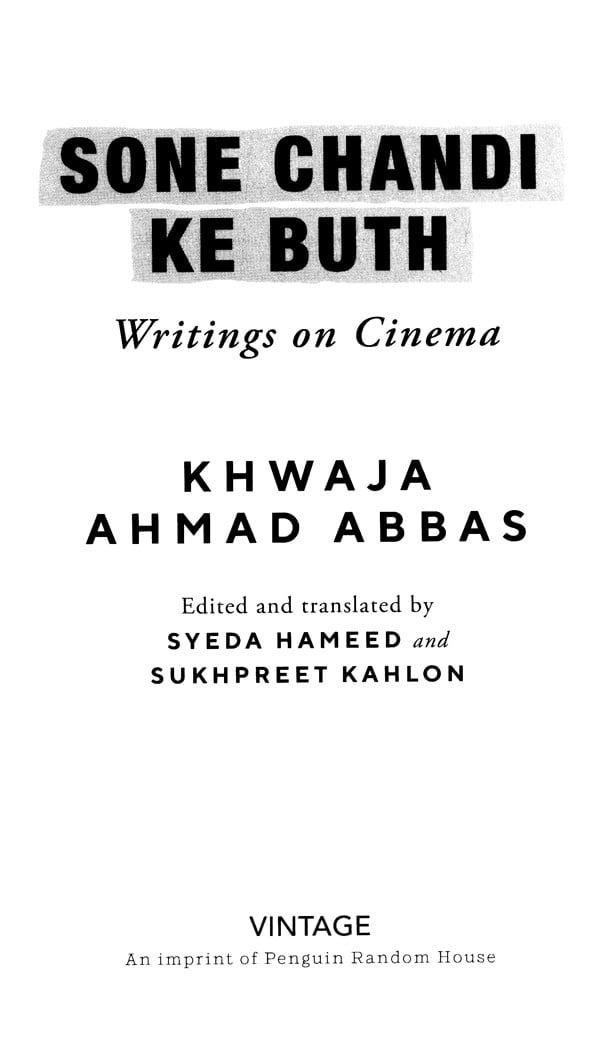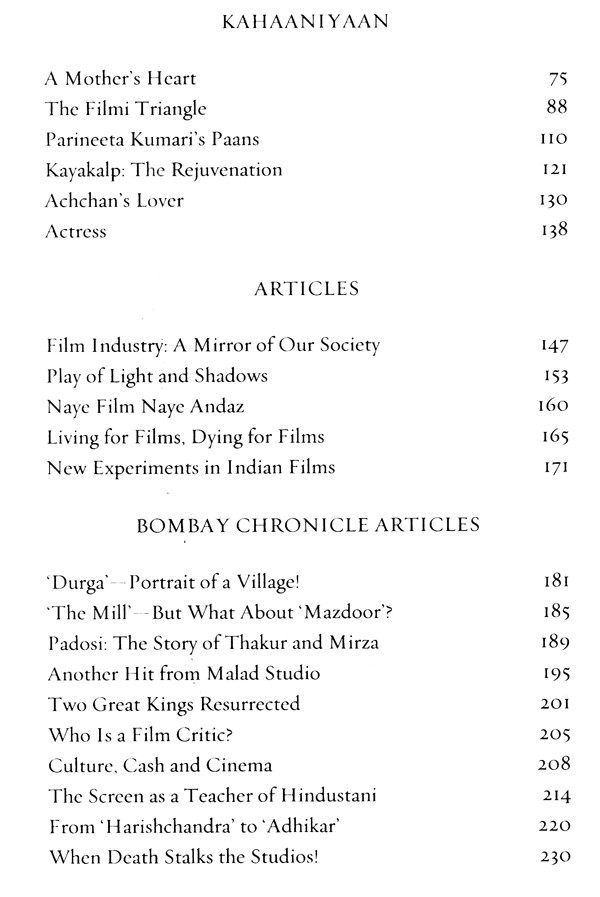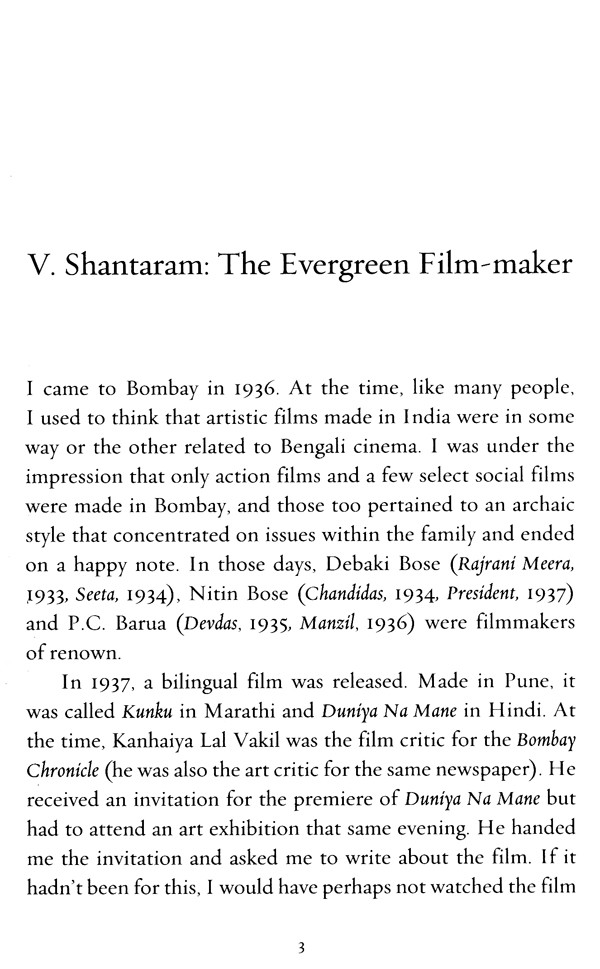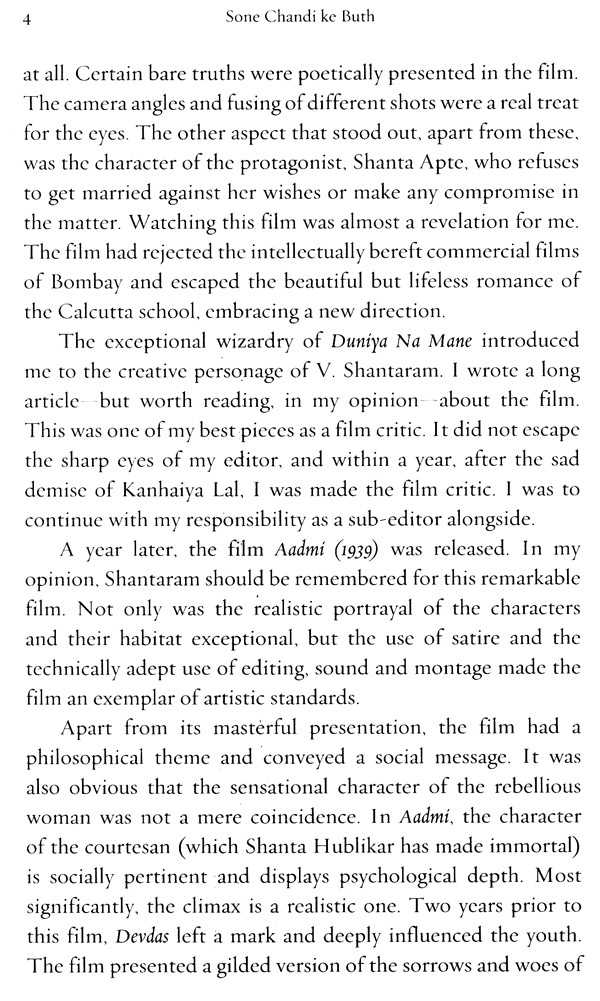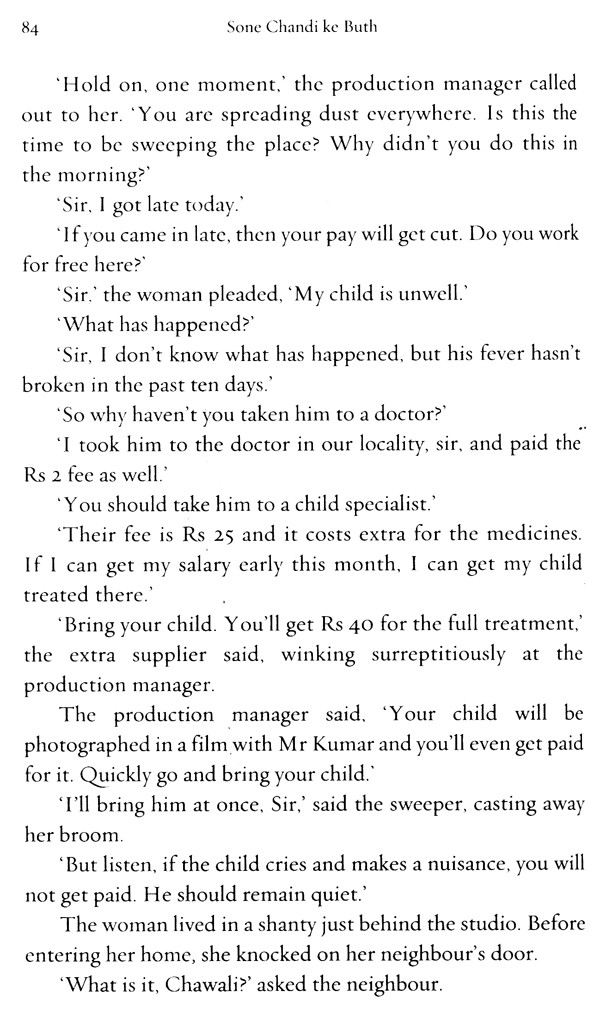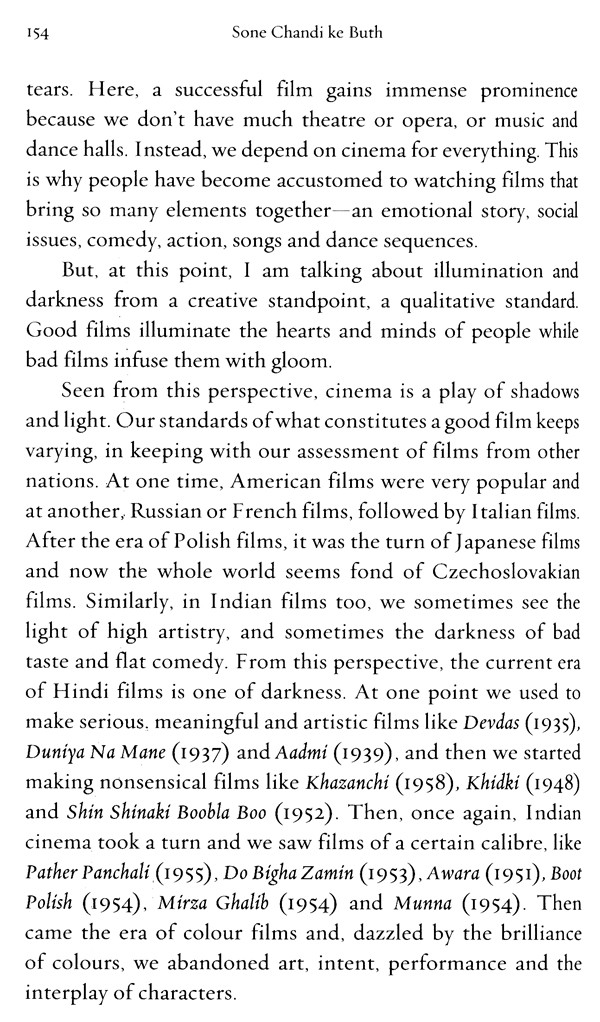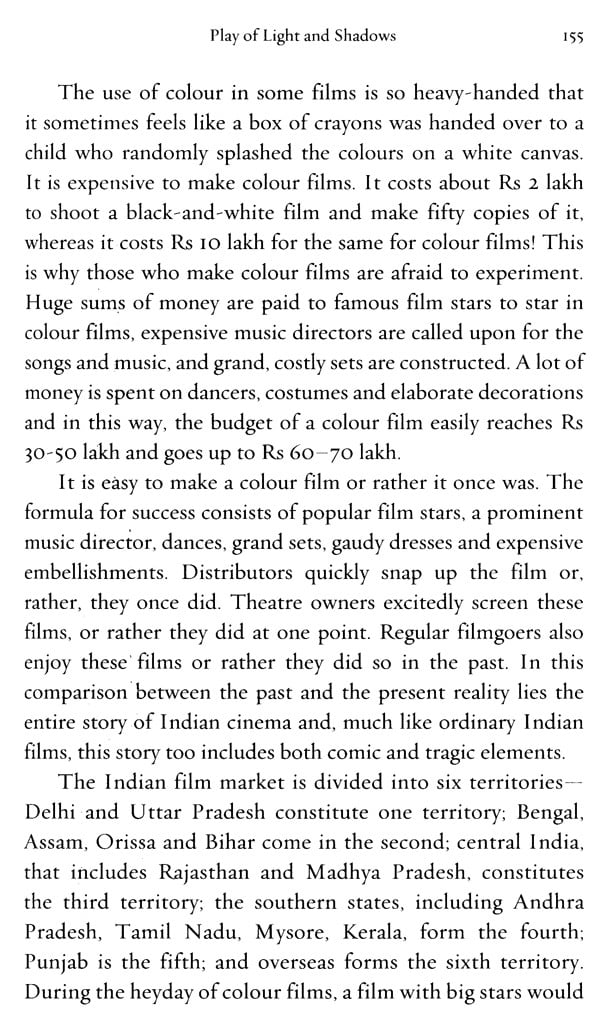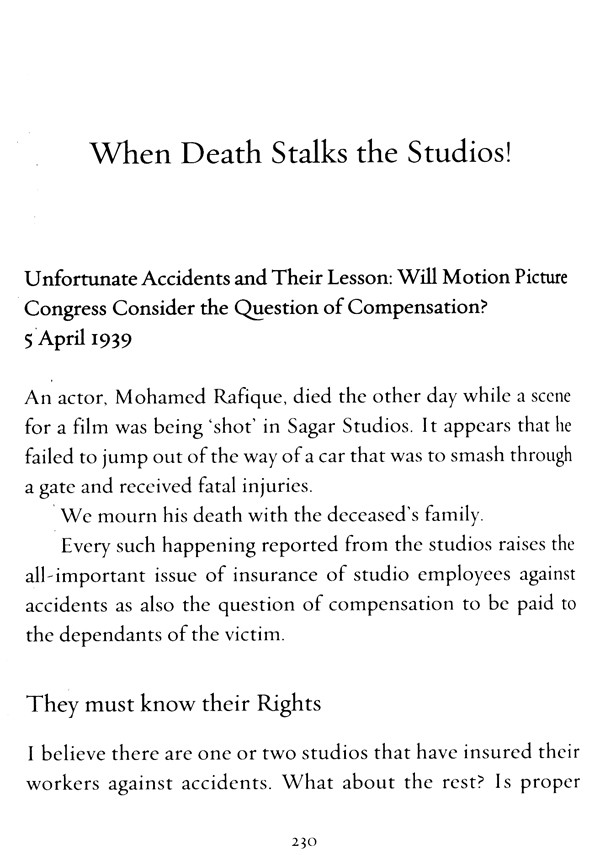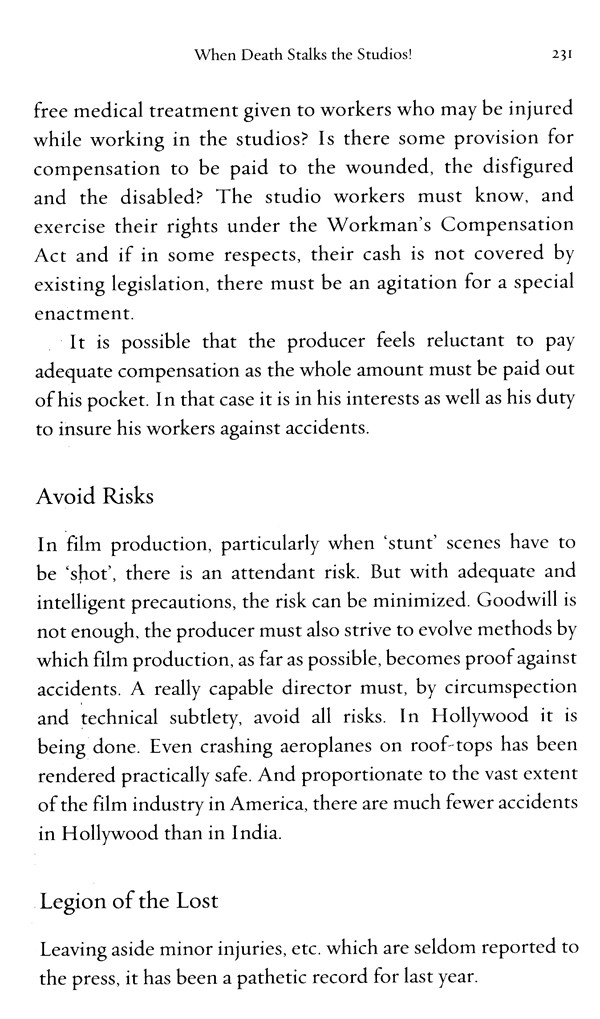
Sone Chandi Ke Buth- Writings on Cinema
Book Specification
| Item Code: | UAX814 |
| Author: | Khwaja Ahmad Abbas |
| Publisher: | Penguin Random House India Pvt. Ltd. |
| Language: | English |
| Edition: | 2022 |
| ISBN: | 9780670095933 |
| Pages: | 252 |
| Cover: | HARDCOVER |
| Other Details | 9.00 X 6.00 inch |
| Weight | 410 gm |
Book Description
The book is a collection of short stories, essays and articles on famous film personalities and varied aspects of the film industry. Abbas was a prolific writer who published seventy-four books in his seventy-three years, besides writing extensively on the film industry for the Bombay Chronicle newspaper. Sone Chandi ke Buth, published a year before he passed away, was his last book-a final word on the glitz, glamour and gritty reality of the Hindi film world.
It includes his candid observations on famous actors, writers and directors such as Raj Kapoor, Amitabh Bachchan, Dilip Kumar, Satyajit Ray, Meena Kumari, Balraj Sahni and V. Shantaram. A series of essay focuses on various aspects of cinema, from the changes in the film industry to the power of film stars. The book also includes short stories set in the context of the film industry, some having veiled references to actual film stars. A common thread running through them all is his emphasis on making socially relevant films rather than those that succumb to the pull of glamour and the box office.
This book also presents a section of his writings as a film journalist for the Bombay Chronicle. His column, The Last Page, one of the longest running in Indian journalism, began in 1935, and moved to the Blitz after the Chronicle's closure, where it continued until his death in 1987. They complement the writings in Sone Chandi ke Buth and are invaluable for cinema lovers.
Abbas's matter-of-fact style and the didactic element in his prose illustrate the humanistic ideals that were at the very core of his thought. His writing, both humorous and incisive, is like a laser that pierces right to the heart of the matter.
SYEDA HAMEED grew up watching with fascination K.A. Abbas, her chacha, who defied the family and carved his own path. Her love of cinema led her and her husband, also a film buff, to make a film on Abbas in 1971. She writes on Islam, Sufism, gender and peace, has written several biographies and translated verse and prose from Urdu into English. She was awarded the Padma Shri by the Government of India in 2007.
Writer, film journalist and scholar.
SUKHPREET KAHLON is a PhD candidate in cinema studies at the School of Arts and Aesthetics, Jawaharlal Nehru University. Her research work examines private film collections and film archives. Her interest in independent cinema led her to become a programmer and curator for film festivals. Her writing concentrates on film history, independent films and Punjabi cinema.
Uday kuchh waraq bulbul ne kuchh laaley ne kuchh gul ne Chaman mein har taraf bikhri hui hai daastaan meri Some pages were blown away By the poppy, the nightingale, the rose: My story lies scattered all over the garden.
The man wrote seventy-four books in seventy-three years, so few have survived! This includes 3000 pieces of journalese, the longest running weekly column, forty-six years nonstop in Blitz, forty films (thirteen under the Naya Sansar banner).
Mujhe kuchh kehna hai I have to say something. Short stories, articles, novels, dramas, films-all these forms of expression seemed to burst out of the man called 'human dynamo' by his closest friends. Today, multiple screens flash past our bedazzled eyes. In those hoardings, the film world is ubiquitous, whether it is RRR (Rajmouli Ram Charan Rama Rao, 2022) or Bachchan Pandey (2022) or Gangubai Kathiawadi (2022). Or the gigantic hoardings of film stars like Akshay Kumar and Shahrukh Khan in blue jeans advertising Kajaria tiles and Omany tiles respectively. Blue is true!
But Abbas lived in a different age; it was a different sensibility in which he worked.
He had many friends, of whom three names readily come to mind: Krishan Chander, Ali Sardar Jafri and Rajinder Singh Bedi. Of them, only Jafri Sahib was alive when Abbas lay dying. so he assigned him a duty at his funeral. This was recorded in the will he published on 13 June 1987 in his column 'Last Page" of Blitz: The Last Will and Testament of Khwaja Ahmad Abbas.
**Contents and Sample Pages**
